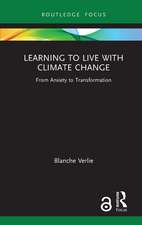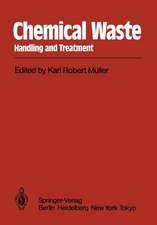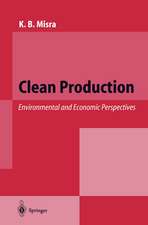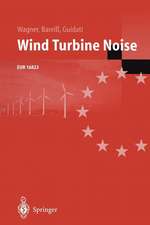Sound Analysis and Noise Control
Autor John Foremanen Limba Engleză Paperback – 14 mar 2012
Preț: 405.48 lei
Nou
Puncte Express: 608
Preț estimativ în valută:
77.59€ • 82.97$ • 64.69£
77.59€ • 82.97$ • 64.69£
Carte tipărită la comandă
Livrare economică 18 aprilie-02 mai
Preluare comenzi: 021 569.72.76
Specificații
ISBN-13: 9781468466799
ISBN-10: 1468466798
Pagini: 480
Ilustrații: 461 p.
Dimensiuni: 178 x 254 x 25 mm
Greutate: 0.83 kg
Ediția:1990
Editura: Springer Us
Colecția Springer
Locul publicării:New York, NY, United States
ISBN-10: 1468466798
Pagini: 480
Ilustrații: 461 p.
Dimensiuni: 178 x 254 x 25 mm
Greutate: 0.83 kg
Ediția:1990
Editura: Springer Us
Colecția Springer
Locul publicării:New York, NY, United States
Public țintă
ResearchCuprins
Preface.- Acknowledgments.- 1 Basics of Sound.- 1.1 Generation of Sound.- 1.2 Equations of Motion of Plane Waves.- 1.3 Velocity of Plane Waves.- 1.4 Specific Acoustic Impedance.- 1.5 Spherical Sound Waves.- 1.6 Sound Intensity.- 1.7 Levels.- 1.8 Waveform, Frequency, Pressure Change.- 1.9 The Decibel.- 1.10 Frequency Spectra of Sound.- References for Chapter 1.- 2 Mechanism of Hearing and Subjective Rating.- 2.1 Construction of the Ear.- 2.2 Functioning of the Mechanism.- 2.3 Subjective Response and Units for Rating of Noise.- 2.4 Loudness; Phons and Sones.- 2.5 Loudness of Short Duration Sounds.- 2.6 Age-Related Hearing Loss-Presbycusis.- 2.7 Noise-Induced Hearing Loss.- References for Chapter 2.- 3 Instrumentation for Noise Measurement.- 3.1 General.- 3.2 Microphones.- 3.3 Sound Level Meters.- 3.4 Weighting Curves.- 3.5 Basic Sound Level Meter System.- 3.6 Vibration Transducers.- 3.7 Frequency Analyzers and Filtering.- 3.8 Tape Recorders.- 3.9 Signal Processing.- References for Chapter 3.- 4 Sound Fields.- 4.1 Reflected Sound.- 4.2 Ideal Sound Source.- 4.3 Practical Sound Source.- 4.4 Anechoic Rooms.- 4.5 Reverberant Rooms.- 4.6 Directivity Index and Directivity Factor.- 4.7 Attenuation of Sound Pressure with Distance in a Free Field.- 4.8 Attenuation of Sound Pressure with Distance in an Enclosure.- 4.9 Propagation of Sound in Air.- 4.10 Outdoor Barriers.- 4.11 Attenuation Provided by Trees.- References for Chapter 4.- 5 Absorption, Silencers, Room Acoustics and Transmission Loss.- 5.1 Absorption.- 5.2 Dissipative, Reactive and Active Silencers.- 5.3 Behavior of Sound in Rooms.- 5.4 Sound Transmission Loss and Sound Transmission Class.- References for Chapter 5.- 6 Vibration and Vibration Control.- 6.1 Introduction.- 6.2 Equation of Motion for a System Having a SingleDegree of Freedom.- 6.3 Free Vibration without Damping.- 6.4 Free Vibration with Damping.- 6.5 Forced Vibrations without Damping.- 6.6 Transmissibility.- 6.7 Forced Vibration with Damping.- 6.8 Motion Disturbance-Single Degree of Freedom.- 6.9 Isolator Selection.- 6.10 Types of Isolators.- 6.11 A Mass Subjected to Motion in Several Degrees of Freedom-Coupled and Decoupled Modes.- 6.12 Vibration Criteria.- 6.13 Vibration Damping.- References for Chapter 6.- 7 Noise Criteria and Regulations.- 7.1 Introduction.- 7.2 Indices for Environmental Noise.- 7.3 Criteria for Indoor Noise Environment.- 7.4 Regulations of Hearing-Damage Risk in Industry—the U.S. Occupational Safety and Health Act Standards.- 7.5 Outdoor Noise Criteria.- References for Chapter 7.- 8 General Review of Noise Control and Practical Examples.- 8.1 General Review of Noise Control.- 8.2 Practical Examples of Noise Control Techniques.- 9 Noise Source Diagnosis and Case Studies.- 9.1 The Use of Sound Power Data in Source Diagnosis.- 9.2 Further Case Studies in Noise Control.- 9.3 Case Study of Noise Reduction from a Centrifugal Pump and Motor Drive in a Laboratory.- 9.4 Example of Use of Silencer and Silencing Material in Ventilation System.- 9.5 NIOSH Case Histories.- 9.6 General Texts, Handbooks, and Manuals.- Credits for Figures and Tables.- Appendix I Glossary of Acoustical Terms.- Appendix II Conversion Factors.- Appendix III Acoustical Standards Organizations and Standard Documents.- Appendix IV Useful Acoustics Periodicals.- Appendix V Guidelines for Regulatory Control of Occupational Noise Exposure and Hearing Conservation.- Appendix VI Buyer’s Guide to Products for Noise and Vibration Control.- Appendix VII Dynamic Measurement Instrumentation Buyer’s Guide.























